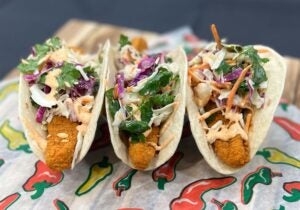Three generations possess the lion’s share of purchasing power today: baby boomers, Generation X, and Millennials. Not every member of a generation thinks and acts the same way, but members share enough similarities to guide restaurant operators in developing brands, concepts, and menus that maximize today’s profits and help ensure the future viability of their business.
Before evaluating generational differences, consider what Chicago-based research firm Technomic Inc. refers to as the “primary need states” of restaurant consumers. These desires are universal, crossing generational divides.
Everybody wants:
- Affordable prices
- Fresh, high-quality food
- A meal and overall experience that are worth the price paid
- Fast or prompt service
- Accurate orders
It’s the “secondary need states” that differentiate the generations.
Baby Boomers
Technomic defines boomers as those born between 1947 and 1965. Boomers are currently the largest generation, though Millennials will outnumber them by 2030, according to Technomic Consumer Research Manager Anne Mills. Boomers also dwarf the other two groups in terms of spending power— more than 12 times that of either group on its own.
These secondary need states drive boomers:
- Price and value
- Friendly, attentive servers and staff
- A variety of appealing, healthy options
“Boomers may be new empty nesters or they may be contemplating retirement,” Mills says. “They have more time to sit and enjoy meals. They gravitate toward full service restaurants.”
Generation X
Born between 1966 and 1976, Generation X is the smallest of the three age groups, with the smallest spending power. Their secondary need states are:
- A fun, upbeat restaurant atmosphere
- A menu and/or ambience that’s good for groups
- Preferred beverages, including adult beverages
“Gen Xers are in the mid-life phase,” Mills says. “They’re starting and raising families, and are looking to balance work and life. They want restaurant environments that are conducive to their kids and friends.”
Millennials
Technomic categorizes Millennials as those born between 1977 and 1992. The Chicago-based market-research firm Datassential broadens that definition and tracks both “adult Millennials” (which it deems to have been born between 1979 and 1988) and “young Millennials” (born between 1989 and 1995). When considering the drivers and behavior of this group, it’s important to note that there are differences between younger and older Millennials.
“The younger ones are just starting out in life and are likely still in school,” Mills says. “The older ones are more established.” Datassential Senior Director Maeve Webster advises operators to focus on adult Millennials now, since they have more spending power.
In spite of the age span, both older and younger, Technomic reports that Millennials share these secondary need states:
- A desire to be able to customize meals
- A group-friendly menu and/or ambience
- Craveable foods and beverages
- New or unique foods and flavors
Cultural diversity is one of the most salient characteristics of Millennials, according to Mills. This group contains many more Latinos, Asians, and Middle Easterners, who grew up eating home-cooked dishes that reflect their heritage. This, along with a rise in interracial marriages, a surge in TV cooking shows, and the ubiquity of Internet access, has given the Millennial group more exposure to different cultures and cuisines.
As a result, “Millennials are much more adventurous in their food choices,” Mills says. “Dining out is entertainment for them—and part of the entertainment is trying something new.”
On the Menu: Generational Menu Ideas
How do these generational differences play out on your menu? First, remember that the size and purchasing power of the boomer generation makes it the primary target for the restaurant industry.
Much of the foodservice industry’s research and marketing focuses on Millennials. But boomers are your bread and butter. Fortunately, successful restaurants are already doing a good job of serving boomers—that’s why they’re successful. Operators should plan on broadening their appeal to other age groups over time. It’s an evolution, not a revolution.
The evolution of sharing plates is an example. Boomers who grew up on protein-based entrées served with an array of sides have now embraced the variety afforded by sharing plates. It’s a way to serve boomers’ preferred food in a new way—a way that also appeals to both Gen Xers and Millennials.
The secondary need states of Gen Xers are more about the overall restaurant experience than the specifics of the menu. Dining out is social and experiential for them, just as it is for Millennials. But Millennials are driving new flavor solutions in a way Gen Xers are not.
Go Global
Flavor innovation begins with Millennials’ taste for global cuisine. Note that it’s ‘global cuisine,’ not ‘ethnic cuisine’. Millennials’ cultural diversity gives them a different perspective on such labels. A Millennial Latino doesn’t consider Latin food to be ethnic, and neither should we.
What we should do is expand our view of global beyond boomer-approved Mexican, Italian, Chinese, and Japanese cuisines to also include contemporary global influences, including Indian, Thai, Korean, Peruvian, and Greek.
Strike a Sour Note
In terms of individual flavors, Millennials like bold—fruity, spicy, salty, sweet—and sour is emerging as a favorite. That’s driven by an interest in foods that are rich in probiotics, including yogurt, kimchee, sauerkraut, and vinegars. Sour beers are also an emerging trend.
Redefine Healthy
Millennials are also keenly interested in health and wellness, “Though it’s different than the health concerns boomers have,” Mills notes. “Boomers associate health with low-fat, low-calorie, and low-sodium dishes. Millennials are much more concerned with the origin of their foods. Is it fresh? Is it local? Is it sustainably grown or raised? That’s what healthy means to them.”
Think Custom
Customization is another key motivator for Millennials. The consumer-research company The Hartman Group reported in 2014 that Millennials “love” Chipotle because the Mexican grill allows them to customize their burritos, “something that gives them ownership without too many options.”
This preference for customization, Mills maintains, combined with less money in their pockets, means Millennials primarily patronize fast-casual concepts. That will change in the future as their purchasing power grows. Sharing plates will allow full-service restaurants to meet Millennial demand for customization.
Operators will have to adjust sharing-plates menus to account for Millennials’ cultural diversity, culinary curiosity, and unique health preferences—but the tools to target Millennials are already in place. Just incorporate these changes incrementally over time.




























